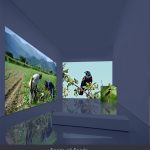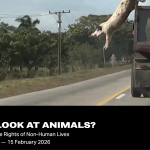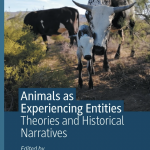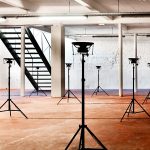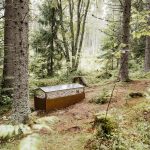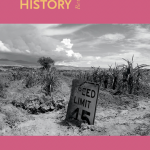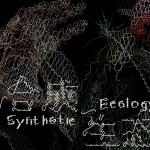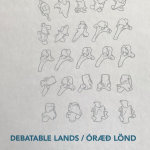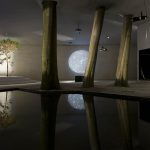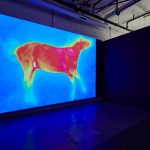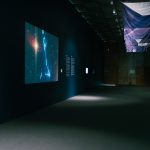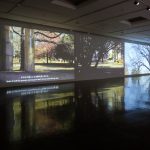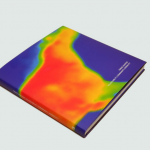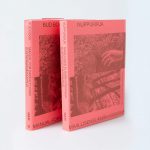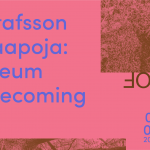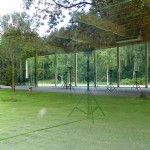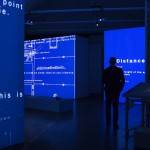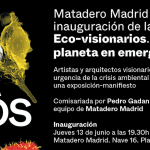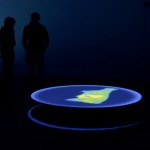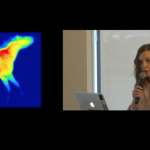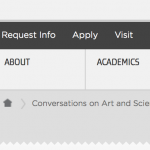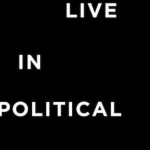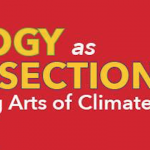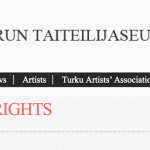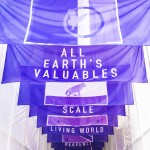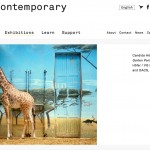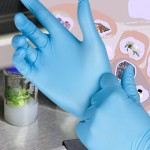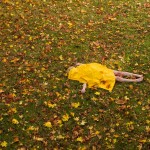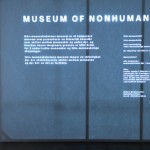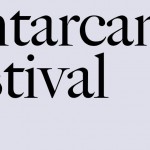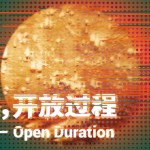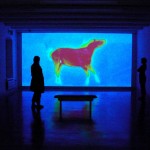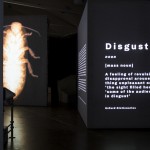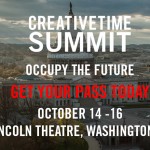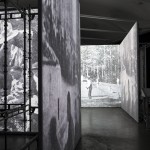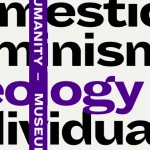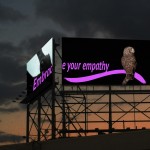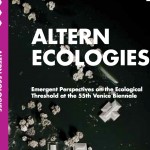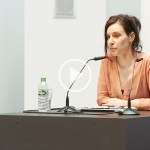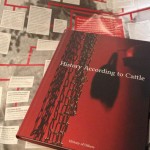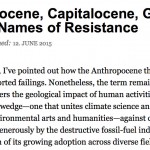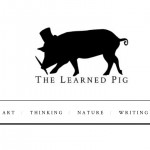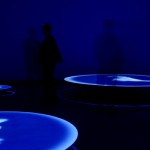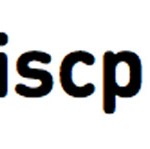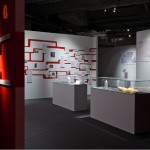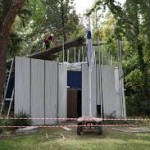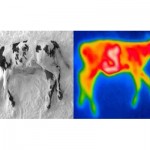Essay on: thisisnotablog.co
June 4. 2021
On my wall is a leaflet I brought home from one of the many events on art and social action that were organized in New York after the 2016 elections. “Can love be used as a tool for resistance?” it asks. At the time, shaken by the rise of fascism and the dehumanizing language of the far right I, too, felt this was a question that was important to consider. Two years in, I’ve become troubled by the hyperbolic language of our campaigns for justice and the ways in which the word ‘love’ has been used in social justice-oriented academic and art circles. Sentences such as ‘fighting hate with love’ are commonly used as readymade slogans, while it is not uncommon to hear the word ‘love’ used as a justification of someone’s subjective perspective, while their language is in fact humiliating and excluding. The word ‘love’ is thus used as shorthand for being on the right side of history, a word that is thrown around with the implied assumption that the one doing the throwing is also the one doing the loving, though few speak of what this love is and whether we even need love, or if being able to work together is enough. I myself have been guilty of this. The word ‘love’ is in danger of becoming yet another undefined exaggeration that has lost its relationality to actual social behavior. Instead of paying attention to what words mean and how we in fact treat each other, we go along with the erosion of meaning, joining a mode of partisan political speech where the function of words is not to communicate but to perform, distract, or injure. This is a game we are destined to lose: fighting narcissist gaslighting with weighty words is impossible when they have already hijacked the language. When language is at its extreme all the time, there are no words to describe, identify, or communicate real pain. And when love becomes a blanket statement, weaponized for righteousness, there are no words left to describe qualities and attitudes of loving.
By the same token, the call for our semi-public spaces – conferences, panels, discussions, working groups – to be spaces of love and thus safe for exposing our intimate vulnerabilities, seems to overlook our emotional and psychological reality. Our vulnerabilities are real, and there are reasons we expose ourselves only to those whom we trust and with whom we, indeed, have been able to form a loving relationship. These relationships are built through coexistence and commitment, and to suggest that we should show this trust in spaces we share with strangers, often only momentarily, can leave us feeling unprotected instead.
Against this backdrop, I set out to think of love in its different modes, and what we could learn from it. I’m less interested in love as a universal principle of acceptance or good will than in exploring how love in its particular instances opens up spaces for meaning, growth and reciprocity. How can the figures of the lover and the muse resonate with the figure of the reader? How can they guide our communication in directions that allow for the kind of precision and engagement that is necessary for our coexistence and growth in the face of current social and political crises? Can love, indeed, be used as a tool for resistance?
***
When you fall in love with someone, or become intimate with someone, the image of their appearance seems to dissolve. They become an impression, a presence: something that is hard to pinpoint or even describe. You think of the one you long for, and their features escape your mind, you can only recall a particular gesture, a particular moment, a touch or scent, little things that evoke a feeling in your own body. Even from a distance, the loved one refuses to flatten into an image, which is what is always required for creating a stereotype. They remain complex, multi-dimensional, impossible to capture – and so you desire to know, learn and understand more, to immerse yourself in them, to drink, and to taste them. They have come from the outside and now they inhabit you.
In its ability to gently shatter assumptions of who we are, the intimacy between lovers holds immense political power. Here, a connection is formed between pillow talk and political dialogue or, in other words, pillow talk can be seen as an important aspect of political dialogue. In the space of pillow talk, that is characterized by an acceptance of the other not as a clearly identifiable character but as indeterminable, social differences break apart. Labels that make us look at others through an optics of identity retreat into the background, giving way to a presence that is more prismatic, more nuanced, more fluid. We inhabit social categories, but they cease to determine our existence. And what eroticism, in turn, gives us in this regard is a realm that is governed by an awareness that even if our desires are pleasurably entangled with identities and labels, they are not what we can eventually be reduced to. The kind of vulnerability that is necessary in order for theory to be grounded in lived realities becomes available, as well as the kind of tenderness that carries critique without rejection and judgement. It becomes possible to acknowledge one’s position in structures of social inequality, yet be accepted as someone who holds the potential to be more than that. Further, despite their indefinable presence, the loved one is never a generic other, but always this particular one, different from all the others, yet without bearing a stable mark of difference or superiority. It is simply them. And what they evoke in us is a desire to be seen in our uniqueness, beyond labels and roles, equally undefined, the way we experience ourselves looking into the world, openly, namelessly, like a child. Entering into an encounter with the lover, we find ourselves liking other things, thinking other thoughts, being otherwise. Love is recognition beyond identification.
The figure of the lover stands close to the figure of the muse. The notion of a muse is buried under reductive and gendered stereotypes that are determined by the male gaze and female objectification. Art history lacks male muses or muses of female artists not because there weren’t any, but because female agency and desire has been left unacknowledged in writings of that history. A muse is not, however, always an object of desire. Rather, it is an encounter, a crack in the indifference of ordinary life, a rupture that awakens us and suddenly makes all things matter. To have a muse is to have someone or something open up in oneself a desire to connect, a desire so strong that it pushes one to speak even when no one hears, and perhaps exactly when no one hears. In this art, or any kind of creative work, is akin to love: both are filled with a desire to express one’s experience with as much precision and detail as possible. Hidden in that expression is a possibility that revealing one’s inner landscape will result in someone – perhaps even that very special someone – being disarmed and moved in the face of such bravery and trust. Art is born out of this misplaced hope: creation fills the space of the one who is not here, to whom talking is not (yet, anymore) possible. And like the songs and poems of all of our worlds tell us, there is immense creative power in loss and longing, the siblings of intimacy and desire, that can push us into a space of solitude where there is nothing to lose in expressing our inner truth. In their pathos, loss and longing tell of a deep engagement with the world and that in the end everything – our politics, our visions – come back to the body and its need to live free; not in a solipsistic, isolated freedom, but to live free with and through others. Thus the space of a muse is a liminal space, hovering between the corporal, particular someone and the universal other that can be approached (only) through it. The muse, in their absence and in their perpetual escaping, is a gift for thinking, and thus also for political thought.
***
The intersections of class, race, ethnicity, gender and sexuality often seem too complex to put into words and yet we embody them, simply, materially. It is personal, for each and every one engaged in this world. No matter what labels we carry or social roles we fulfill, our reality is always more complex than any label or role. Now, more than ever, there is a need for emotional truthfulness and sincerity that enables us to talk outside reactionary politics and locate the struggle in our individual positions – because it is from these individual positions that we must reach towards each other and towards change. But this kind of open reflection of one’s place in the struggle and means for joining it requires either extraordinary courage or a space of trust where one can allow oneself to be vulnerable and exposed in the face of the other. The public sphere of art, academia and activism – the panels, social media platforms, journals, gatherings of different kinds – offer less and less room for this kind of reflection. The fear of imperfection of thought and of being implicated in structures of social injustice is making us risk less, think less, grow less, at the very moment when risking, thinking and growing is needed more urgently than ever. Not least because of the eroding forces of social media, we are pushed into modes of binary language – us versus them, love versus hate – that create seemingly unbridgeable differences even between those committed to the same struggle. In the absence of lived coexistence that allows for and necessitates tolerance for complexity and forgiving, a sense of communality is being replaced with a notion of community that is based on flat, un-contextualized opinions. On these platforms, communicating becomes shouting into the hostile winds of the social sphere and its politics, its receiver being the generic, stereotyped other – either the villain or the ally. These spaces encourage and reward antagonism as a strategy, since antagonism generates maximum reactions, and so we get deepening polarization and fragmentation facilitated by algorithms that make us think maximum reaction equals maximum impact. And antagonism is effective, because it defines oneself in contrast to the other, and through that appropriates the other’s power and charisma. But antagonism is a limited method for building, and so we need to think of what, how, and with whom, we can do that work.
***
Not all intimacy, of course, is erotic or romantic: there is intimacy in comradeship, friendship, in family that equally creates modes of encounter that are void of reductive labeling. And there is also intimacy in thinking together, and creating together, that emerges from the same source as love and desire and arouses us in similar ways. Thinking, like all creativity, is libidinal. In the silences between intellectual exchange, a desire can emerge to fall into the other, to feel and smell them, to merge with them and then again depart for debate. Such moments activate the same movement beyond predefined meanings that opens for us in pillow talk. This kind of talk, a mode of exchange that becomes possible only in spaces of intimacy, could be considered the highest form of political dialogue – talk in which channels are truly open and thinking together as a mode of becoming otherwise becomes truly possible.
The problem with the question “can love be used as a tool for resistance?” is that there is possibly no tool humans ever invented that didn’t become a weapon. Love is not an instrument: it is for itself, asks for nothing, only cares. Further, working from a place of love cannot be a general principle, applied to everyone everywhere, because love (earthly love at least) is not general. It is anchored in time and place and in bodies and scents and unexplained resonances and proximities. Thus it cannot be applied to all un-identified, generic others. Intimacy breaks apart in crowds, just as a muse is always that particular one, never the mere example of a group. We expose ourselves to the other when we feel it is safe to do so, and this safety is built through co-habituation, to which there are no shortcuts. But what we can learn from love is its gentle shattering of prefixed identities, as well as a certain truthfulness that is necessary in order to form deeper connections. Love throws us in a place where communication matters differently. It is this truthfulness of language we’re after: language that is guided by a genuine attempt to be understood and to be seen. And here understanding is less a state of knowing and more a continuous gesture of reaching towards the other with an attitude of care, despite – or even exactly because of – the ruptures that make knowing impossible. Even if this kind of talk, I believe, is not possible for a wider public, it is possible to talk to a particular other, in a space opened up by intimacy, under the demand of accuracy and detail that love has taught us, yet to do it publicly.
And here enters the figure of the reader – a particular someone who participates in the creation by lending it their gaze, an impression of their presence. There is a difference between expressing this, and expressing this to you. There is gentleness that does not exclude rigorousness on the level of what is being expressed – it may even enable rigorousness in ways that are impossible from a distance, exactly because what matters is to be understood. What matters is precision, the kind of precision that one searches for when stakes are high, which is when stakes are love, and where love and pretending cancel each other out. Mobilizing love might mean mobilizing a particular relationship to a particular other so that it guides us towards a truthfulness that is difficult to otherwise access. This “you” – the lover, the reader – becomes the muse of thinking.
In The Creative Process James Baldwin writes: “Societies never know it, but the war of an artist with his society is a lover’s war, and he does, at his best, what lovers do, which is to reveal the beloved to himself and, with that revelation, to make freedom real.” This lover’s work, this engaged and almost intimate tone of voice, an uncompromising demand to both bear witness and to be seen, that is present in Baldwin’s political writing is what makes it so incisive. The same quality is present in some of the most moving social critiques, such as Ta-Nehisi Coates’ Between the World and Me, which expands the space between a father and a son until the whole society becomes visible in the light of their intimacy. It is this intimacy that opens up the path for social critique – and it is the language of intimacy that allows the critique to be communicated in ways that are rooted in life. Art, in its commitment to detail, and artists, in their commitment to the complexities of a lived reality, guard a potential for thought that is not trivial but instead necessary for political theory. We do, after all, live in a world of particularities, details and irreplaceable, significant others.
Writing to someone is not a method, nor a strategy. Writing to someone means taking lived reality seriously as the only home of thinking and the home to which thinking eventually will return: our bodily being with another. Thus thinking together may not always be thinking with everybody out there, but instead thinking with a handful of people: real, living, breathing beings, who are, like oneself, situated in their particular intersections of the world and its ideologies. Perhaps love cannot be utilized as a tool without it becoming a weapon. But it might allow for a register, a tone of voice, that leaves room for growing together – revealing oneself to each other but not in order to humiliate or judge, but to, as Baldwin writes, make freedom real. This freedom, I suggest, is not an abstraction any more than love is – both emerge out of mutual respect and awe in the face of another and their singular, and uniquely precious existence.
